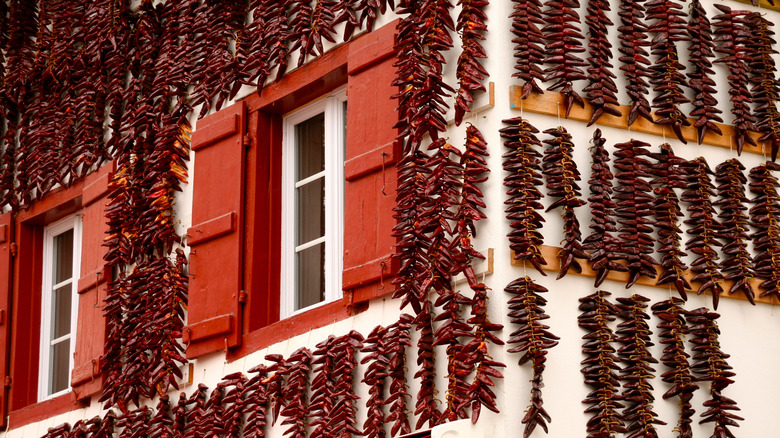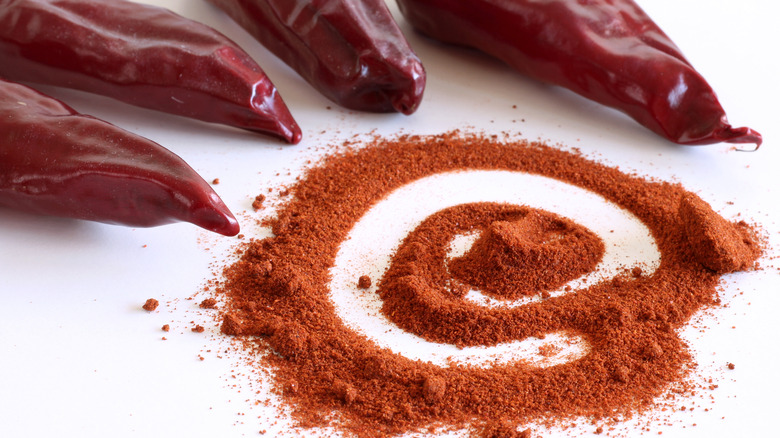Why This French Basque Pepper Is Protected By The Government
It's not uncommon to associate specific dishes to the regions where they originated. Local cuisine and traditions are part of what creates cultural richness. However, it's less frequent to hear about an ingredient receiving a status of controlled or protected designation of origin, aka AOC and PDO respectively. The European Commission describes these as classifications given to specific regions and products, based on the idea that a food (or wine) is intrinsically tied to the place where it is grown.
While it might sound excessive to go through the fuss of certification, unique products benefit from these regulations in order to avoid imitations that are labeled as originals and so consumers can be informed when purchasing the item, too. The most common example would be Champagne.
And like Champagne, the piment d'Espelette pepper has the same designation. The regions for both goods are protected, and the production — from growth to packaging — is all controlled via the European Commission. While most people are familiar with Champagne, the piment d'Espelette is a more recent arrival on the PDO scene, approved in the year 2002, according to Syndicat du Piment d'Espelette.
This unassuming chili pepper, botanically known as Capsicum Annum Gorria, became a staple of Basque cuisine after being introduced by voyagers traveling from Mexico in the 16th century. Thanks to the ideal microclimate of the Basque region in southeastern France, surrounded by hills and the ocean, the pepper thrived here, explains French Food in the US. The majority of production was originally focused in the town of Espelette, hence the name, however current regulations permit agriculture in 10 Basque towns.
Why this pepper is so special
At first, this chili pepper was used medicinally and also to preserve meat, but it soon became popular in food as an alternative to costly black pepper (via Nancy Conway). Nowadays it is used in countless ways, such as to flavor sauces, marinate meat, and even to add spice to chocolate. The heat level isn't major compared to some chilies, and PepperScale reports it can reach 4000 Scoville units, a level similar to paprika.
While the fresh pepper itself is not considered part of the PDO classification, powdered forms or braided ropes of dried chilis are certified, says Tried and Supplied. Aside from identifying specific areas where the pepper can be grown, PDO and AOC regulations guarantee traceability from start to finish – this includes yield, irrigation, agricultural methods, harvest dates, processing, and more, according to Gaec Segida, one of the farms growing the famed pepper.
The piment d'Espelette's physical and sensory characteristics are also examined by a panel of judges to ensure quality and typical features. According to the Syndicat du Piment d'Espelette, color (orange, red, and reddish brown are acceptable), smell (hay, citrus, fruitiness), intensity (medium), and taste (subtly sweet with a medium spice that lingers), are all carefully examined before granting a stamp of approval.
Since the late 1960s, the town of Espelette has hosted a festival to celebrate their favorite pepper, says Fiery Foods Central. Tourists from around the world flock to the event, eager to discover the delightful flavors of the pepper that authentically only hails from here.

